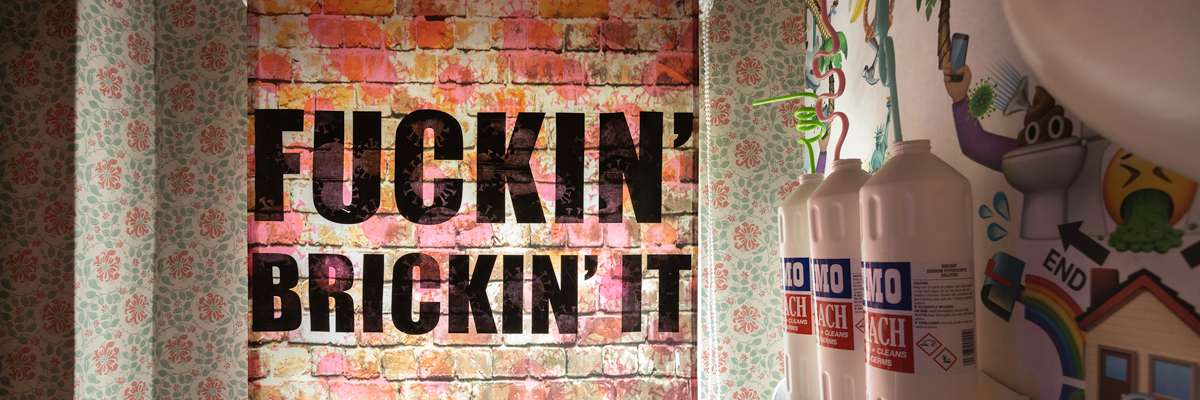You have been seeing a number of rooms in this old Victorian home regaled and reimagined by a number of artists over the past few weeks as we have featured the installations for a unique exhibition called disConnect. Today we have artist Aida Wilde who speaks extensively here about every aspect of her installation and world view and how she created her work for this project .
“The inaugural exhibition at Schoeni Projects’ London space, a Victorian townhouse in South West London, the exhibition, Titled disCONNECT, transforms the period building – currently under renovation – with new site-specific works from ten urban artists working across seven countries.”
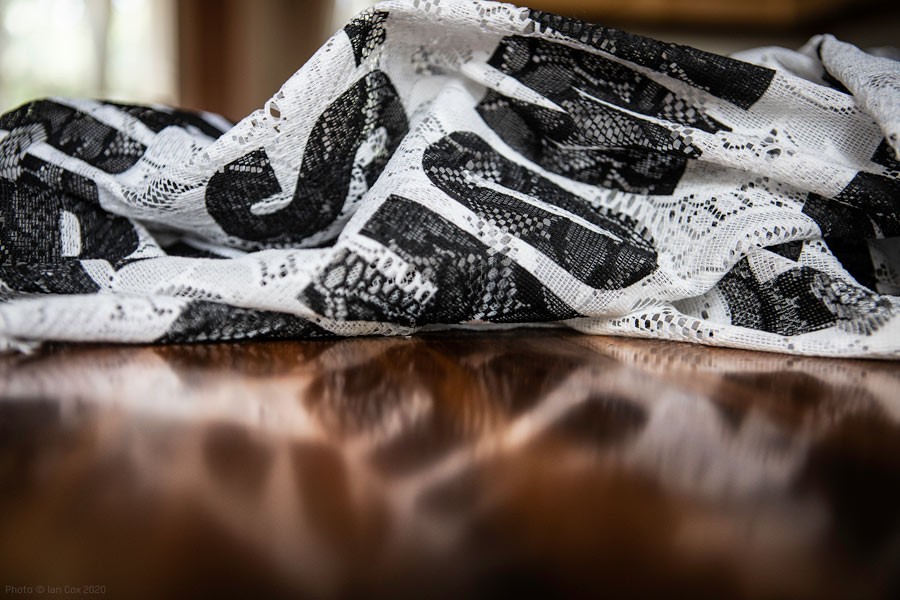
BSA: First tell us which room(s) were designated to you?
Aida Wilde: We were sent very concise floor plans and video of the house as were initially asked to state out preferences to which rooms we would like to take over.
From the off-set, I was drawn to the most unusual and challenging spots in the house, like the walk in master cupboard which was a little narrow with mirrors along it and a window at the end of the little annex ….I also liked the wallpaper in the library but again, that was a pretty conventional room- I’m not a big fan of the 4 walls/ window/box formula in spaces that I show art work in.
I like working with a space that can interact and speak with the work… also sometimes I find that a space can enhance and influence the kind of work being made…. They should go hand in hand for me, especially when it comes to this kind of installation- in a house….& if it doesn’t, it can shift context/perception and only be seen as decoration.
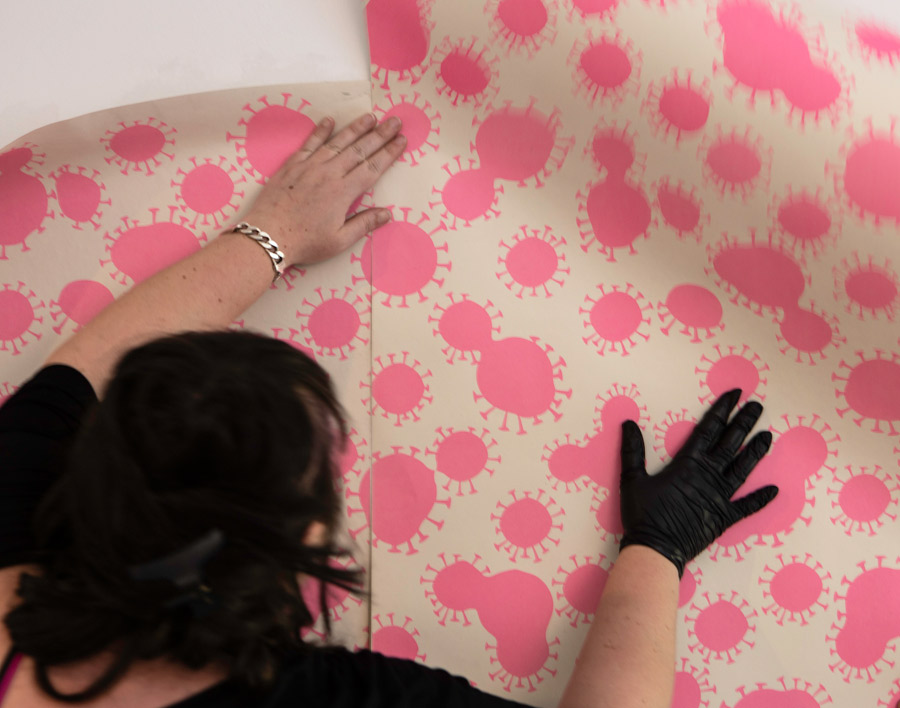
There was conversations about stair cases and toilets which I have been know to have been drawn to in the past so Nicole had suggested the downstairs loo (That she had previously dubbed as the Nanny Loo) and it’s surrounding area which I was very open to- so I began work based on the photos and videos I had been send. It wasn’t until the very socially distanced site visit to the space that I knew we had made the right decision. Everything clicked and was perfect for me.
BSA: Were the spaces intimidating, challenging, hunting or a walk in the park?
Aida Wilde: The spaces weren’t intimidating….I was more concerned about trying to execute the ideas that I had in a middle of a global pandemic, with a lot of the resources that I needed were either closed or operating on a skeleton capacity. There are still a couple things I could fabricate just because what I need was closed.
Fortunately for me, I have a fully self-contained print studio to work from so I at least I knew that I would be able to make most of the work here.
BSA: What first came to mind when you saw the space? Did you change your approach to the space a number of times?
Aida Wilde: I was very excited by the space, in particular the fixings and fixtures that were already there….. I had initially completely dismissed the small cupboard under the stairs, until the site visit and where I saw the big heavy safe inside. I don’t know a lot of houses/people who have a safe like that inside their house, so that sparked a lot of ideas about what I could put inside. I started playing with the idea of being safe/locked in/out, and that is when I came up with the idea of the “Pandemik Panik Room”. A contradiction in itself…. Where you would let out all your fears whilst still locked in inside…. But also, a place for safety, hiding and taking refuge inside of it, under the stairs. Made me chuckle.
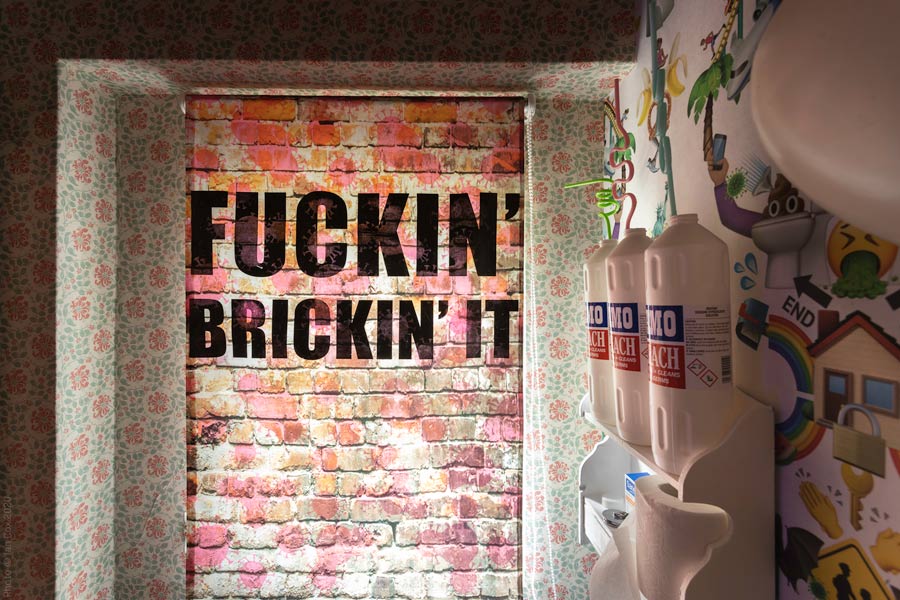
It was always my intention from the beginning, that I would be doing asking people to be involved with the installation, initially via my social media platforms but later as lock down started to ease in the UK, I was able to run a Panik & Fear poster workshop for my neighbours. I live in a pretty sheltered artist warehouse complex, so I spread the word, put some posters up and people turned up outside my place on the day to get involved and make me posters to go inside the “Panik Room”. It was a beautiful sunny day, we shared, talked, created, laughed and got a little emotional, a very rewarding day. I love the fact that it is not only my voice in the house.

BSA: How did you arrive at the final concept?
Aida Wilde: In all honesty, it was very quick and organic. After initial conversations and half jokingly coming up with names like Nanny Loo and Granny Alley, these things already sparked off a lot of ideas. Dissecting the space into “Zones” / areas also helped with creating a pandemic narrative. I wanted each zone to represent a different idea and feeling that most of us might have gone through during our time in lock-down. There are several personal and emotional elements in the narrative like the Red flower/text pieces transcending up the stairs towards the light from the big window. Those pieces are my exploration of my thoughts about life, love and hope, mixed in with verses from the Persian poet and philosopher Rumi. I guess, it’s all about observation, silence, stillness and contemplation (which came with being in lockdown)
The Staying Alert serigraphs were mostly sparked off by what I read and saw in the news… I call these your infomercial doctor/school, you know the ones you may see in a waiting room….warning you against the perils.
Also, I had started to pick up a lot of discarded objects and materials that people were leaving out on the street during the “Lockdown Spring Clean”. I know the thought of bringing something inside your house left outside in a pandemic is absurd, but it was good stuff and I had a little ritual where I would obviously pick them up with gloves, bag them then disinfect immediately once I got them home. A lot of the things I found also determined what I made them into and how I used them in the installation.
I was going to print some of my wallpaper poems to act like banners in the house on paper but I found a big bag of beautiful white lace curtains one day… so this idea evolved and I finally wrote them on the curtains which look so beautiful and haunting on the lace with the light shining through them- They are like ghosts, so I called them “Notes From A Phantom”
I think the curtains are a great example of how ideas grew and evolved just by the substrate and I love what they symbolise & the initial function of what curtains are supposed to do…. So many correlations between lockdown and the outside world and taking these curtains and placing them somewhere where they are completely dysfunctional yet representing an ideology.
BSA: The wall papers are all so ornate…until you look closer…then all sinks in. Who would have thought terror could look so decorative. Like candy in a Florida motel. Did you have fun designing the wall papers?
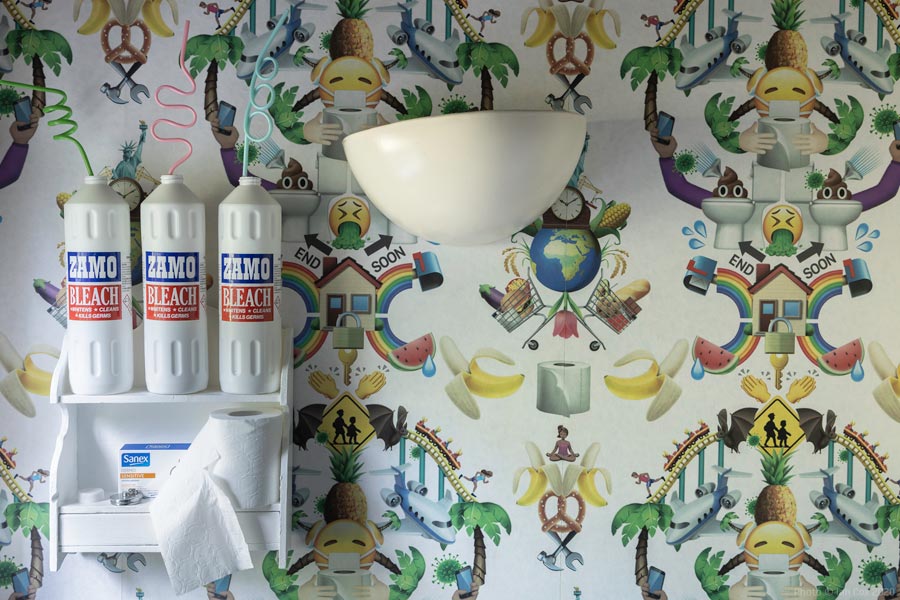
Aida Wilde: I tend to have a lot of hidden sinister meanings behind most of my work- My fine art editions have undertone references to class, colonialism and the taboo. I also like to dissect things within my work. I want to make people stop and look a little bit harder. You know, we’re so used to everything being fast, especially visually; scrolling/swiping etc….. but this has been the perfect time for everyone to slow down and take in the things that we may have dismissed a million times before….so it’s a little bit about discovery and a surprise in the everyday. I wanted to capture this idea in the install. LOOK HARDER.
And I guess when you’re making work about a deadly invisible killer, you can’t instill any more fear and hysteria into people can you! I’m always striving to find a balance between creating something to communicate as well as making it desirable enough for you to want. I want my work to communicate in the most digestible, relatable and clearest way as possible. Art needn’t come with an instruction manual for you to understand it and feel it.
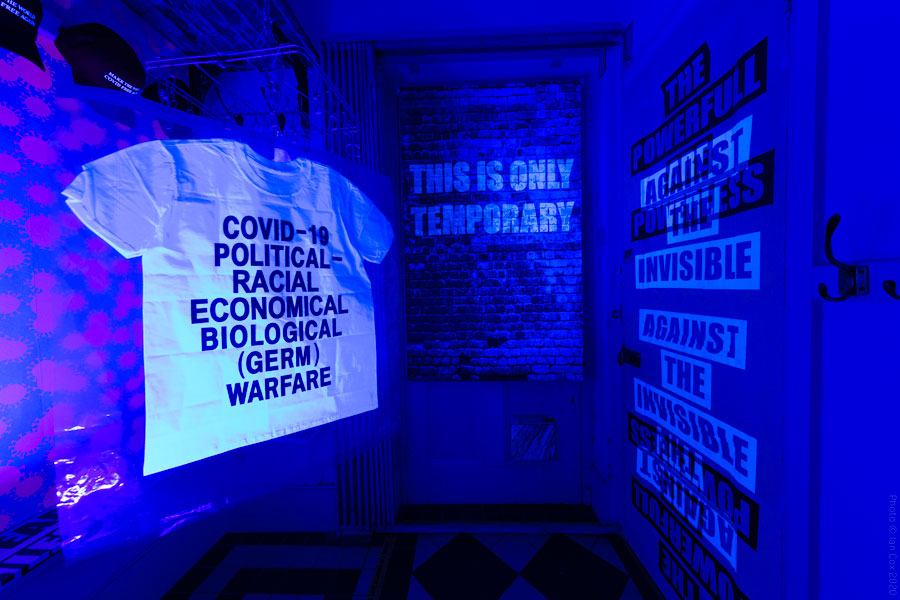
The “Pink Pop Spots” as I call them have been with me for almost 15 years, they’re kinda my calling card on the street as I don’t sign any of my work that’s put out, but people generally recognise its me through them, and it was totally serendipitous that they resembled the Covid-19 virus cells, and this is how we turned them into these little mutating playful things. Forever involving.
With the emoji “Pandemik Mausoleum” wallpaper, I wanted to make something that was a nod to the houses past and complemented the original wallpapers that were already within it, but take it into 2020 obviously. As mentioned before, I really like the damask wallpaper in the library, so that sparked the idea of designing something based on the traditional damask design. Fortunately for me, my degree was in Printed Surface Design where I specialised in pattern for textiles and wallpaper, so again, this was a very comfortable and organic process for me.
I have been using Instagram and emoji subtly through out some of my street work for a few years now- For me, they are the ultimate universal world language to communicate through. From young to old, even my mother sends me an array of emoji based text messages. I had a terrible vision that what if the human population got wiped out because of Covid and a small section of my wallpaper was found some years later…. What would they be able to decipher from it?
A bit like the hieroglyphics you know, what information could you extract, so that was what was going through my mind when I was making it. It was very challenging to get the initial shape and repeat to the way that I wanted it. It did take weeks to complete but I had so many laughs along the way, the mere fact that I was sitting there making an emoji based design with a yellow man clutching a loo roll and Poo’s coming out of a toilet being showered was just ridiculous and surreal, I laughed a lot, still am. One of the hardest challenges was that I wanted to include so much more of the emojis that I really love, but I had to be very brutal and concise with the story that I wanted to tell, it was hard to strip it way back to what it is now. I am happy with it… it seems balanced.
Inequalities and systematic racism have been brought to the forefront causing further questioning of our institutions and causing rifts between friends and even family members. The global balance is definitely shifting with internal instability on the rise. With the usual deterrents of conflict on the decline, a possible uprising could take place globally… so warfare indeed.
BSA: How can you explain that a Pandemic can devolve into political warfare? Shouldn’t it all be left to the scientists and the doctors?
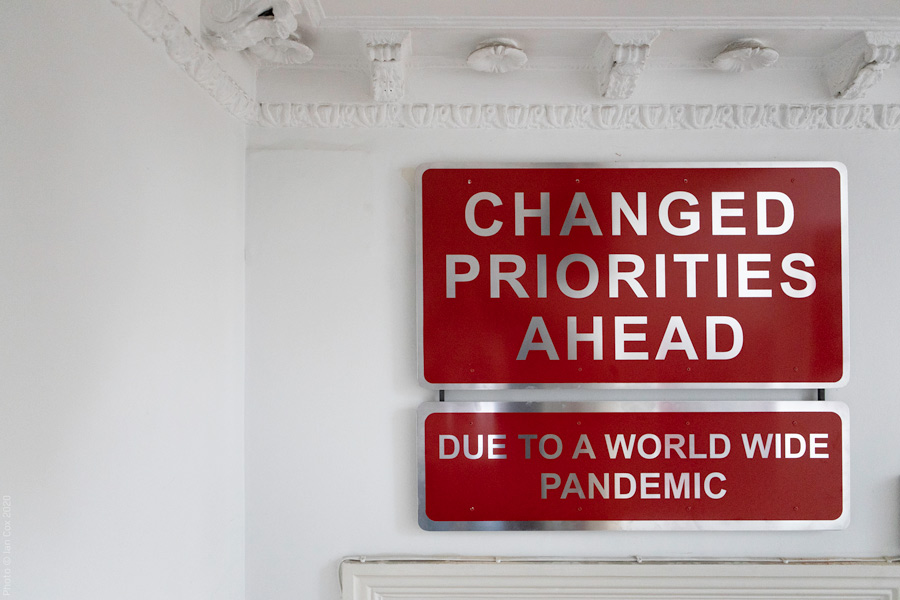
AW: This is a very thought provoking question so thank you for asking this as I haven’t talked about the piece of work in the installation that you are referencing.
Seemingly a very accessible and disposable substrate, but a t-shirt has a multi-faceted role which can bring forth and highlight personal or political ideals… even becoming a walking billboard in the communication of subcultures and beliefs etc… I always say, “never underestimate the political power of a T-shirt.” Obviously, how you present the said T-shirt as part of an installation is another matter- In this case, I have displayed it in a zip lock Vacuum Seal bag which is supposed to encase and preserve it in a “germ and dust free” environment.
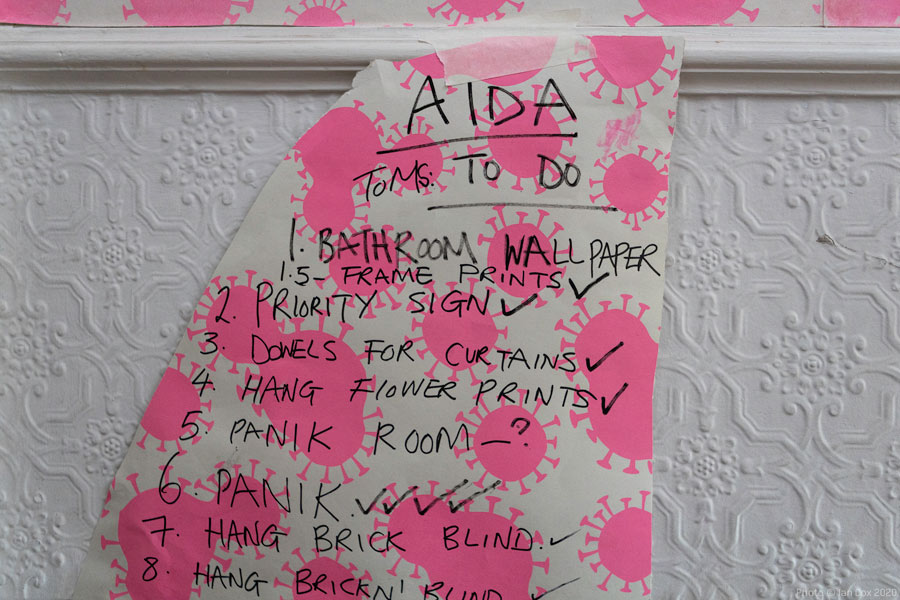
The original design referring to ‘Germ Warfare’ was made by Keith Haring in 1987 in reference to the AIDS epidemic and we even had to consult Annelise Ream the director of collections at the Haring Foundation to clarify the origins etc… as I could not find any information during my research into the t-shirt. It really spoke to me and I was very clear that I needed to adapt this design and bring it into 2020. There were just too many similarities and circumstances between the epidemic and the virus that struck an unnerving chord. Shivers…. It was very emotional.
Regarding the scientists… we are at the mercy of them and on our leaders. Yes, we are in a race, the race for a vaccine and a cure. We really don’t know the atmosphere and tension that’s going on behind those secure lab doors but what I feel is that imagining once a vaccine is discovered! The first question is going to be “who” & “Where”. The next thing is going to be, will they share this finding freely, and at what cost? Is it going to become about POWER & control, commodity and ownership? It’s a bit like someone knowing how to make gold! The power is going to lie with the people/country, which will discover the vaccine first.
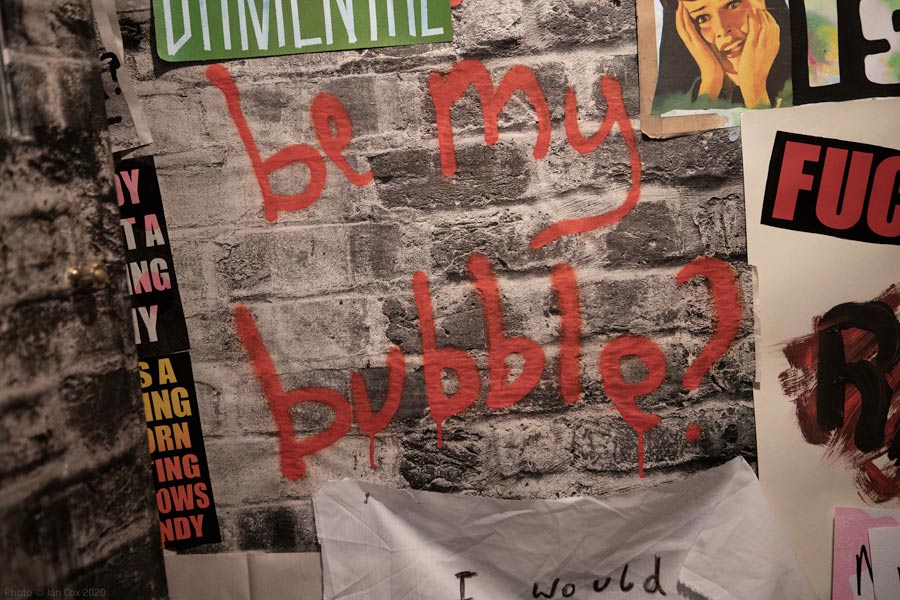
I really don’t want to think about the worse case scenario & which country finds it first- because if it is the US and if in particular still under it’s current leadership- WE ARE ALL FUCKED.
Perhaps not a germ warfare but a political one for sure, especially in regards to disparity, who and what is effected and deaths. We need to consider the demographics too…. Those living in poverty, women, the youth & the displaced like the refugees all come into mind.
With this great power, conflict may arise- we have already witnessed what took place in our shops & the carnage of empty shelves, the fights, the diversion and looting of PPE/Masks from airports etc… so imagine what conflicts can arise from someone finding a vaccine.
If things like democracy and economic independence have been keeping the peace thus far, the global recession and depression caused by the virus; these degradations could shift the economic balance within many countries, affecting trade and peace within nations. Especially with the fall of trade, Trump has already waged trade wars as we speak with reconfiguring the US supply chains from China and defunding WHO and widening the economic inequalities, which are a direct consequence of the pandemic.
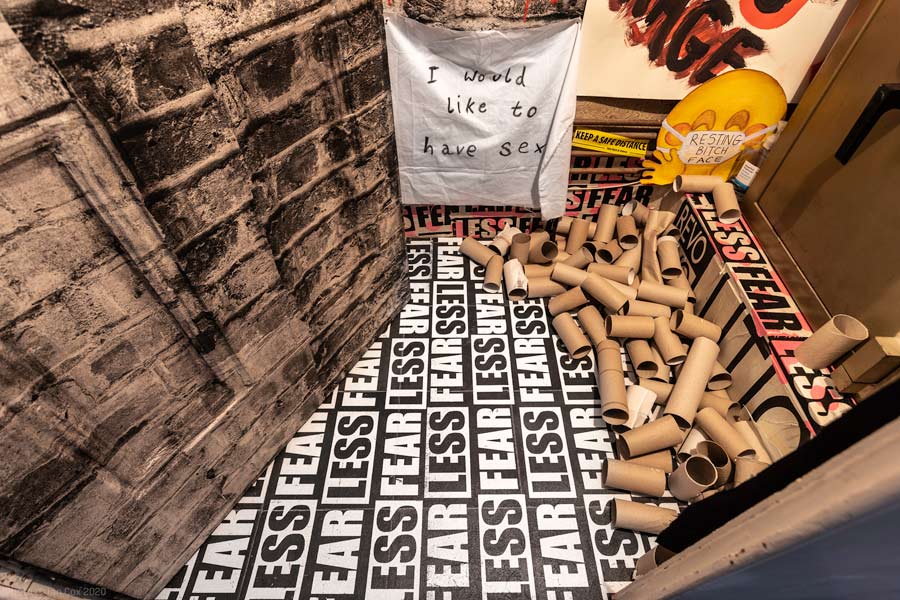
BSA: How best would you describe your installation besides the obvious messages?
Aida Wilde: I would like it to be seen as a narrative. It’s a time capsule that captures a moment, thoughts, emotions, loneliness, pain, love and politics. It’s about collaboration, community and the voice of the many. The work will speak and shout…. And I really hope it stands the test of time. I tried my best to present a sympathetic and mindful view of what many of us have experienced during these unsettling and unpredictable time in our history. Our individual experiences, memories and traumas have been so varied, so I hope there is something in there that people can relate to individually. I also hope that I have brought some light & humour into the installation- We need to remember how to feel laughter again.
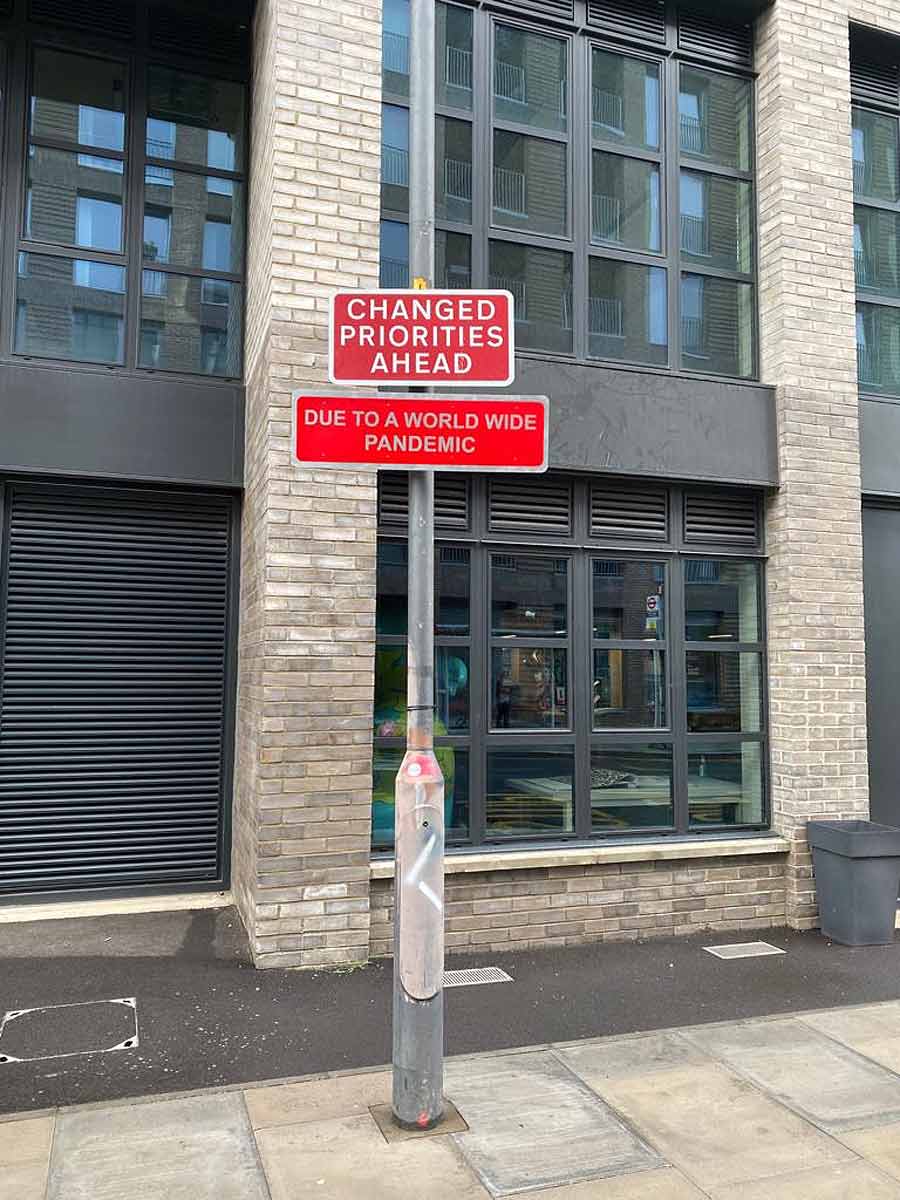
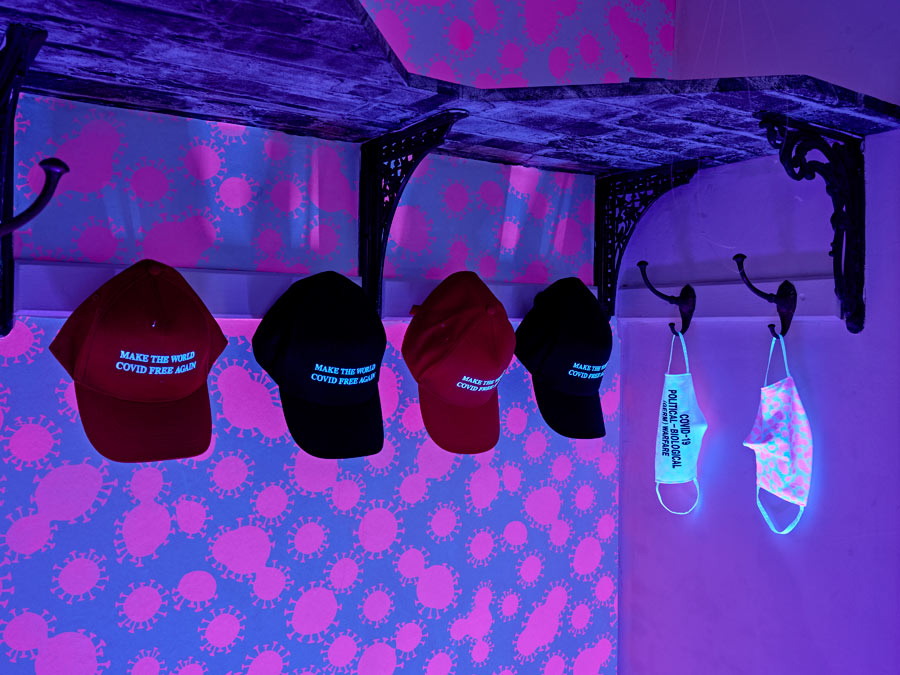
Other Articles You May Like from BSA:
The Bushwick Collective Block Party, scheduled for Saturday, June 1, from 11:00 am to 6:00 pm at 7 Scott Ave, Brooklyn, NY, is an iconic annual event that has evolved from a simple mural painting jam...
Welcome to BSA Images of the Week, where we are keeping our minds expanded and eyes wide open as the transformation of society and its fabric is happening right before us. We're living in a bubbl...
Artist Mona Tusz creates a relief mural in Lodz, Poland using stained glass, wood, metal, and custom illumination in her latest esoteric journey of spirit and emotion for this latest creation for UNIQ...
Our weekly focus on the moving image and art in the streets. And other oddities. Now screening : 1. Kiwie and Zabou in Cyprus 2. Pol Corona in Vicente Lopez (Buenos Aires) 3. Clemens Behr at...
Color-blocked basketball courts appreciated from a plane, cheerful abstract murals for restaurants, hotels and cafes, and massive wood collages comprised of assembled pieces that are each finished be...
 BROOKLYN STREET ART LOVES YOU MORE EVERY DAY
BROOKLYN STREET ART LOVES YOU MORE EVERY DAY